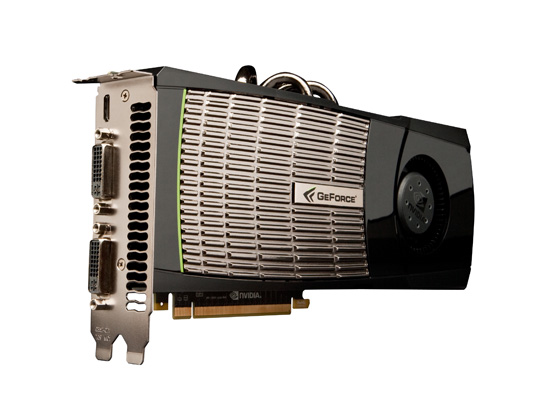NVIDIA Moves Fermi GPUs to Legacy Status, Ends Mainstream Driver Support for 32-bit Operating Systems
by Nate Oh on April 7, 2018 8:00 AM EST
This week, NVIDIA has announced that they are ending mainstream graphics driver support for Fermi-based GeForce GPUs. Effective as of this month (i.e. immediately), all Fermi products are being moved to legacy support status, meaning they will no longer receive Game Ready driver enhancements, performance optimizations, and bugfixes. Instead, they will only receive critical bugfixes through the end of the legacy support phase in January 2019.
While the announcement mentions ‘Fermi series GeForce GPUs,’ the actual support plan specifies that mainstream driver support is limited to Kepler, Maxwell, and Pascal GPUs. So presumably all Fermi products are affected.
In the same vein, also effective this month is NVIDIA dropping mainstream driver support for 32-bit operating systems, as announced in December 2017. Like Fermi, 32-bit operating systems will still receive critical security updates through January 2019. This update also encompasses GeForce Experience, which will no longer receive software updates for Windows 32-bit operating systems.
Given the current drivers, March’s version 391.35 on the Release 390 branch, this likely means that the next branch is due to release later this month, and that it will simultaneously drop support for Fermi and 32-bit operating systems.
In context, NVIDIA’s previous architecture retirement came in March 2014, when their D3D10 Tesla architecture GPUs were moved to legacy status after around 8 years of support. And with this week’s announcement, Fermi has received mainstream support for around the same amount of time, marking the beginning of the end for NVIDIA's first D3D11-class GPU architecture.
However it's interesting to note that Fermi's legacy support window will end up being a lot shorter than Tesla's, stretching for just ten months versus two years for Tesla's. This may be a distinction that proves important, as complex and highly privileged video drivers have been an ongoing source of security vulnerabilities - including as recently as this year in NVIDIA's case. So while the vast majority of Fermi cards have been retired, for any that remain (particularly those in Internet-connected machines) the end of security updates is not a trivial matter.
In comparison, AMD’s GPUs contemporaneous to Fermi were moved to legacy status in 2015, with all pre-Graphics Core Next architectures affected. On AMD’s side, retiring pre-GCN products meant that all their supported GPUs were DX12 capable.
For NVIDIA’s Fermi, Kepler, Maxwell, and Pascal architectures, Fermi was the only one not immediately supported, though the current state of DX12 on Fermi is somewhat unclear. Last summer, NVIDIA’s drivers appeared to quietly enable it, and Fermi products are listed as DX12 supported GPUs, but NVIDIA’s DX12 GPU support page still notes Fermi support is pending. But in any case, this puts the focus on D3D12 supported GPUs, comparable to how NVIDIA’s 2014 retirement of D3D10 GPUs meant retirement of all pre-D3D11 products
NVIDIA support has also posted a list of Fermi series GeForce GPUs affected by this change.
Source: NVIDIA











42 Comments
View All Comments
Flunk - Sunday, April 8, 2018 - link
If you're upgrading a system, anything below a 1040 isn't worth buying at the moment (and even that is only really a worthwhile upgrade for older systems) because anything less can't really handle current gen games and even then the value isn't really there.Most current-gen low-mid range cards cost too much to be worthwhile purchase weighed against the readily available used cards. The GTX 970 and 960 have a lot of usable life left in them and can be had for around $200 and $100 dollars respectively.
DanNeely - Sunday, April 8, 2018 - link
I assume you mean a 1050 since there's no such thing as a 1040. One of them or a used card from the previous generation is going to be a lot more bang for the buck if it'll fit into your system and not need a PSU upgrade. but OEM systems often won't have the PSU headroom for even a 20 or 30W upgrade, and small form factor systems often can only fit single slot or half height cards (there were a few half height 1050's released but the stupidly high prices listed on amazon suggest they've been sold out long enough to attract attention from scalpers).And of course despite what some people in the commentariat always seem to think not all gamers have an enthusiast budget, if you can't afford the $100 card the $70 card that lets you go from cant play to 720p low or from 720p low to 720p high is still still a solid upgrade when the alternative is nothing at all.
RaistlinZ - Saturday, April 7, 2018 - link
How will I heat my home in the winter now?Raylit20 - Saturday, April 7, 2018 - link
With a Q6600!Samus - Saturday, April 7, 2018 - link
Overclocked no less! 105w is just the beginning!Alexvrb - Saturday, April 7, 2018 - link
That's no joke, I have a buddy with an overclocked Q6600 and if you were going by thermals you'd think it was an overclocked overvolted BD-based architecture.Alexvrb - Saturday, April 7, 2018 - link
had*The buddy is still around but the CPU was retired a couple years back.
Achaios - Saturday, April 7, 2018 - link
I retired (ebayed) my Gigabyte GTX 580 SOC in Nov 2014. Most gamers should have moved on away from Fermi years ago.stardude82 - Sunday, April 8, 2018 - link
If $300 GTX 970s didn't move people upgrade, $170 RX 470s should have. <$100 cards in the GTX 950/1050, RX 460/560 should have ensured it no real market with its power consumption. Maybe now it's a viable stop gap card?Dribble - Monday, April 9, 2018 - link
My son is still using my old GTX 570, and it still plays everything fine.